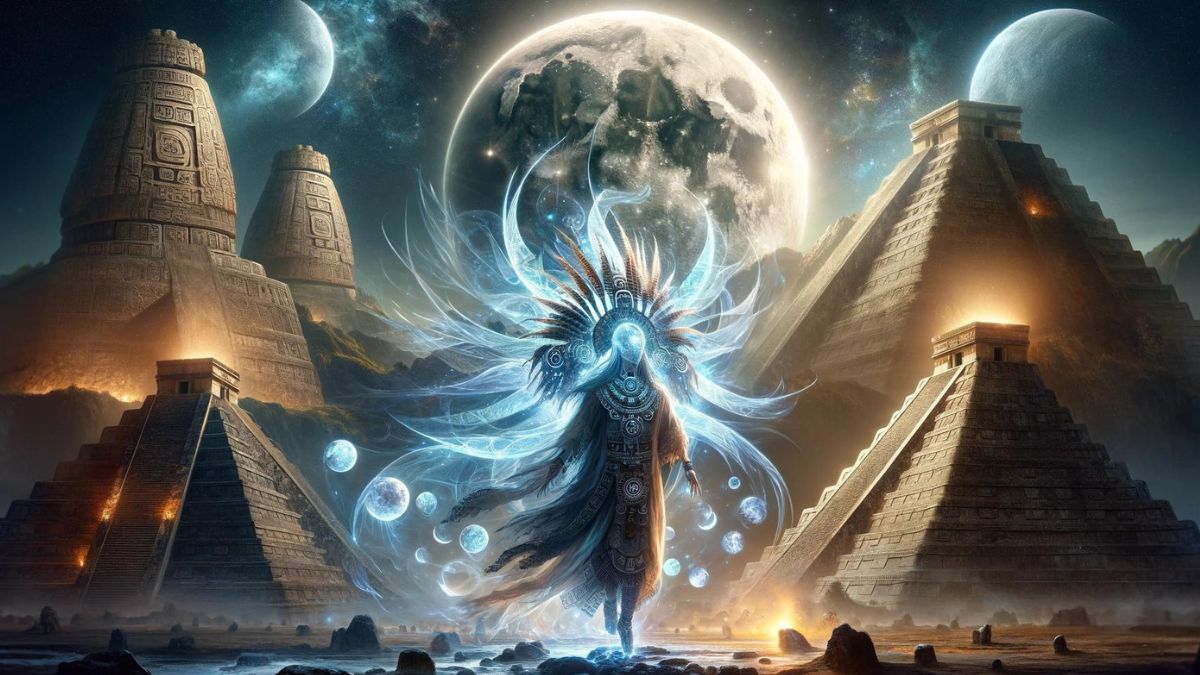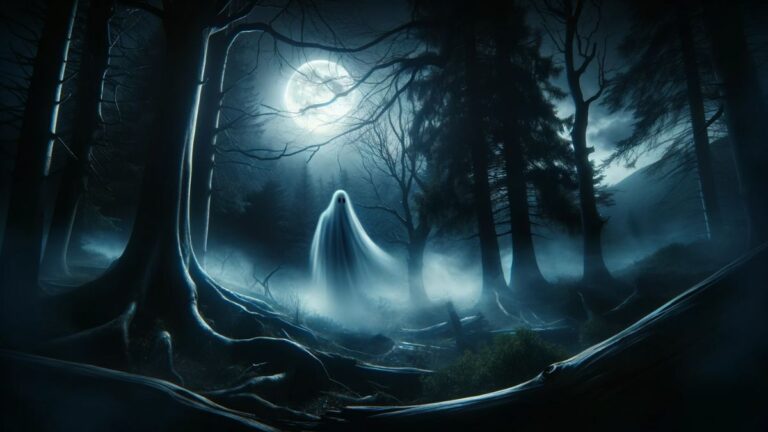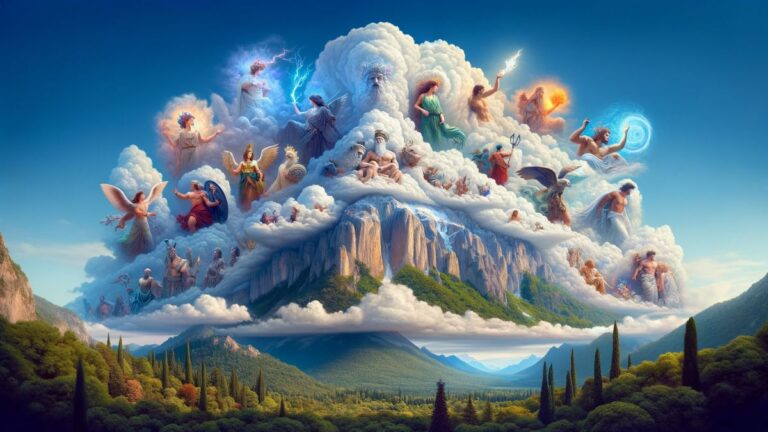Metztli: The Aztec Moon God’s Celestial Mysteries

Dive into the captivating world of Metztli, the Aztec Moon God, and unravel the celestial mysteries that have fascinated scholars and enthusiasts alike. This intriguing figure from Aztec mythology holds secrets of the night sky, embodying the power and enigma of the moon. Join us as we explore the myths, legends, and cultural significance of Metztli, shedding light on an ancient world where gods and celestial bodies were intertwined with daily life and cosmic cycles.
Who is Metztli?
Metztli is a key figure in Aztec mythology, representing the moon and its mystical presence in the night sky. Unlike other celestial deities, Metztli’s role extended beyond just being a moon god; they were a symbol of the night, fertility, and time. This deity’s gender is often depicted as fluid, reflecting the moon’s changing phases and its influence on Earth.
The name Metztli itself holds deep meaning, derived from the Nahuatl language, which was spoken by the Aztecs. It signifies not only the moon but also the night and its encompassing darkness. This connection highlights the god’s integral role in Aztec cosmology, where celestial bodies were not just observed but deeply revered.
Metztli’s imagery is rich and varied, often shown with symbols associated with the night and lunar cycles. These depictions include rabbits, a common motif linked to the moon in many cultures, representing fertility and renewal. The god’s portrayal in art and literature showcases the Aztecs’ deep connection to and observation of the natural world.
Legends of the Night Sky
The Aztecs had a rich tapestry of myths that placed Metztli at the heart of many celestial stories. One popular legend tells of how Metztli became the moon. It’s said that after a fierce battle between the gods, Metztli was thrown into the sky by a more powerful deity, where they became the silver light that illuminates the night.
These legends often served as explanations for natural phenomena, such as lunar eclipses. The Aztecs believed that during an eclipse, a celestial beast was attempting to devour Metztli. This event was met with fear and trepidation, leading to communal efforts to ‘save’ the moon god with loud noises and prayers.
Metztli’s stories are interwoven with those of other deities, such as the sun god, creating a dynamic celestial drama. These narratives were not just tales; they were fundamental to understanding the Aztec worldview, where gods directly influenced the natural and human realms.
Cultural Significance in Aztec Life
Metztli held a special place in the hearts and lives of the Aztec people. The moon god’s phases were keenly observed and used to dictate agricultural practices, from planting to harvesting. This celestial calendar was vital for ensuring the community’s survival, closely tying Metztli’s cycles to the rhythm of daily life.
The moon’s influence extended to Aztec society and governance. Leaders would plan important events, such as coronations or military campaigns, based on lunar phases, believing that Metztli’s favor was crucial for success. This shows the deep integration of religion and politics in Aztec culture.
Children born under certain phases of the moon were thought to be blessed by Metztli, giving them distinct characteristics or destinies. This belief in the moon’s power over human fate highlights the personal connection the Aztecs felt with their deities, with Metztli playing a key role in their cosmological understanding.
Rituals and Ceremonies
Rituals dedicated to Metztli were a core part of Aztec religious practice, often coinciding with specific lunar phases. These ceremonies were designed to honor the moon god and ensure the balance of the cosmos. Offerings, dances, and chants were common, reflecting the community’s respect and reverence for Metztli.
One significant ritual involved the reenactment of the legendary battles involving Metztli. Participants would dress as gods and mythical creatures, playing out the celestial stories that explained the moon’s phases and eclipses. These performances were not only religious acts but also a form of storytelling and cultural preservation.
Nighttime ceremonies held under the open sky allowed the Aztecs to connect directly with Metztli. The moon’s light was seen as a divine presence, and rituals performed under it were considered especially powerful. This direct engagement with the deity highlights the interactive nature of Aztec worship.
Metztli’s Influence on Aztec Astronomy
Aztec astronomy was advanced for its time, with Metztli playing a central role in their celestial observations. The moon’s movements were meticulously tracked, leading to a sophisticated understanding of lunar cycles and their impact on the Earth. This knowledge was crucial for agricultural planning and religious festivals.
The Aztecs used the moon’s phases as a basis for their calendars, which were incredibly accurate. Metztli’s cycles helped them predict seasonal changes and natural events, showcasing the practical applications of their religious beliefs. This blend of science and religion is a testament to the Aztecs’ complex societal structures.
Observatories dedicated to watching the night sky were common in Aztec cities. These structures were not only scientific tools but also sacred spaces where the boundary between the divine and the earthly blurred. Priests and astronomers worked together, interpreting Metztli’s messages and integrating them into daily life.
The Moon God in Modern Times
Metztli’s legacy continues to captivate people today, bridging the ancient past with the present. The moon god’s myths and symbols can be found in modern literature, art, and cultural festivals, reflecting the enduring fascination with Aztec mythology. This revival of interest speaks to the universal appeal of celestial deities and the mysteries they represent.
Educational programs and archaeological discoveries have brought Metztli and the Aztec world closer to a global audience. Museums and cultural centers often feature exhibits dedicated to the moon god, offering insights into the Aztec way of life and their celestial beliefs. These initiatives help preserve and share this rich cultural heritage.
Contemporary spiritual practices in Mexico and beyond sometimes incorporate elements related to Metztli, showcasing the moon god’s influence on modern spirituality. This blending of ancient traditions with contemporary beliefs highlights the timeless nature of the Aztecs’ connection to the cosmos, with Metztli still shining brightly in the collective imagination.






